By Andrew Ragas
Springing for smallmouths with jerkbaits hard and soft, and analyzing the situations that call for reciprocation.
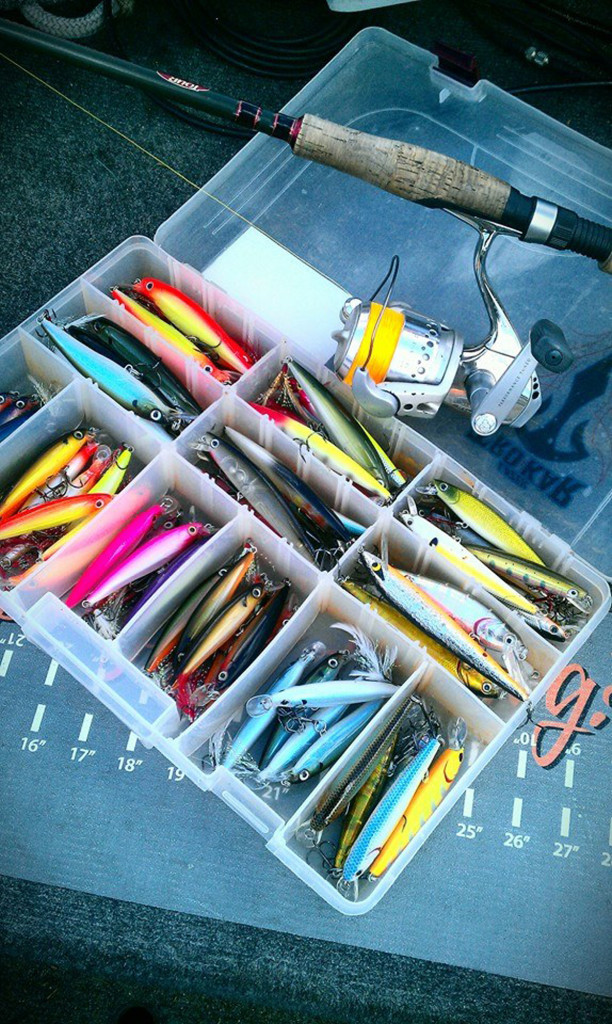 Springtime conjures the thoughts of warming weather and water temperatures. In return, abundant schools of pre-spawn smallmouth bass invade the shallows to stage for spawn. This magnificent period of the year for fishing makes me forget winter, and neglect all other responsibilities for the upcoming weeks that follow.
Springtime conjures the thoughts of warming weather and water temperatures. In return, abundant schools of pre-spawn smallmouth bass invade the shallows to stage for spawn. This magnificent period of the year for fishing makes me forget winter, and neglect all other responsibilities for the upcoming weeks that follow.
Each spring is different, and while the annual movement of bass from deep to shallow is inviting, the fish themselves don’t always follow our prescribed patterns faithfully. Just because they may be shallow and vulnerable doesn’t always mean they’re apt to strike. They still must somehow be triggered, but the question is how?
Most smallmouth anglers have used a jerkbait at some point. It’s a lure choice that plays a huge role in my winning spring strategy. Suspending jerkbaits in the form of hard baits and soft baits catch early spring smallmouths better than most other lure choices I throw. Part of it is through technique while most of it is due to their capability to freeze in space and hover in the faces of fish. Since jerkbaits outfish most other artificial baits by a wide margin in spring, their suspense and triggering effects are what smallmouths focus on the most, as is their heavy baitfish diet.
With my bass season opener taking place the first week of May, the usage and reciprocation of hard and soft jerkbaits is a key tool during spring, and one of my most effective and deadliest fish catching presentations. It is important to understand the nuances and situations for when to use both simultaneously.
When and Where to Reciprocate
The waters of Northern Wisconsin contain some of the best inland smallmouth bass fisheries in the entire upper Midwest. What set our fisheries apart from other inland waters and northern states are the diversity of lake types, fish population densities that vary lake by lake, and the availability of trophy bass that are accessible and protected by catch and release regulations during this time of year. Three and four pounders are so common that they rarely come up in discussion unless it’s a day of unbelievable numbers. Meanwhile, five and six pounders are the ones we target most, and catching a few of this size is possible on any given day.
Beginning shortly after ice out, once water temperatures reach 45 degrees, smallmouths undertake their structural migrations from deep overwintering habitats to shallower staging locations. These areas will be often associated within close proximity to spawning grounds, with heavy concentrations of fish usually schooled and stacked in large groups along the edges of structural elements. This spring movement will last until water temperatures reach 55 to 58 degrees – so this window of opportunity can be for up to four weeks depending upon weather and the fish’s biological clock. These locations may range from rock shoals to large main lake flats used for a combination of both feeding and spawning. However, spots that are more unique for their physical features, accompanying a mixture of rock and wood habitats, and larger size of the flat are often the best. Mix these areas along with main lake areas with avenues to deep open water and the spring smallmouth spots get even better.
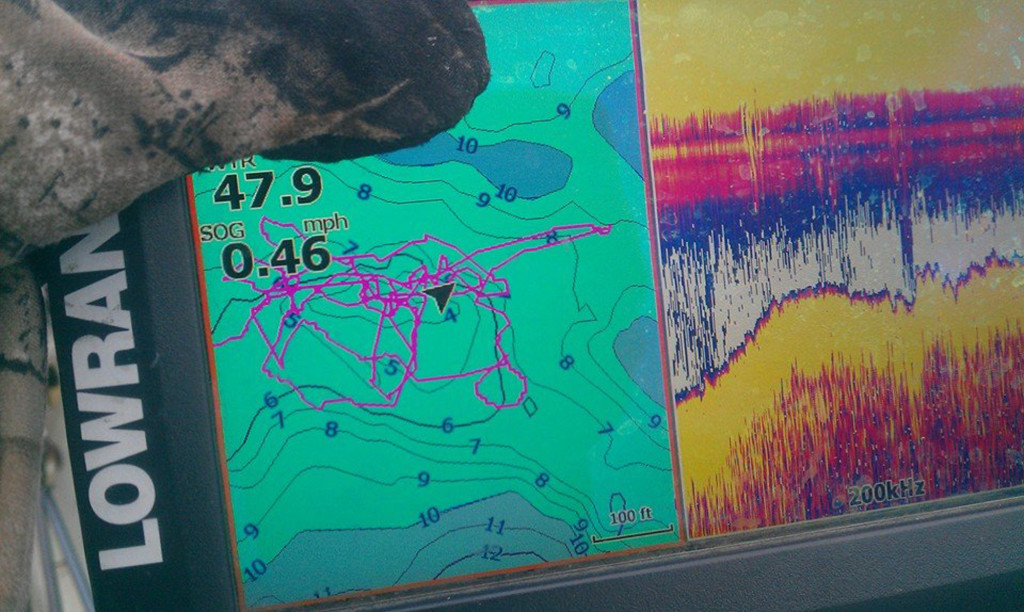
Herky Quirky and Kind of Jerky
The use of suspending jerkbaits largely rose to prominence through tournament fishing and the modifications that ensued. During the infancy of suspending jerkbaits, anglers often customized floating minnowbaits and soft fluke styled plastics to slowly sink and run deeper, and hang motionless to draw strikes from curious smallmouths. Since then, we now have more options and opportunities before us thanks to the soft plastic and hard bait manufacturers specializing in the production of suspending minnows.
Selecting between a hard jerkbait and a soft jerkbait, realize first that you will need both lure types followed by patience when prospecting for spring smallmouths.
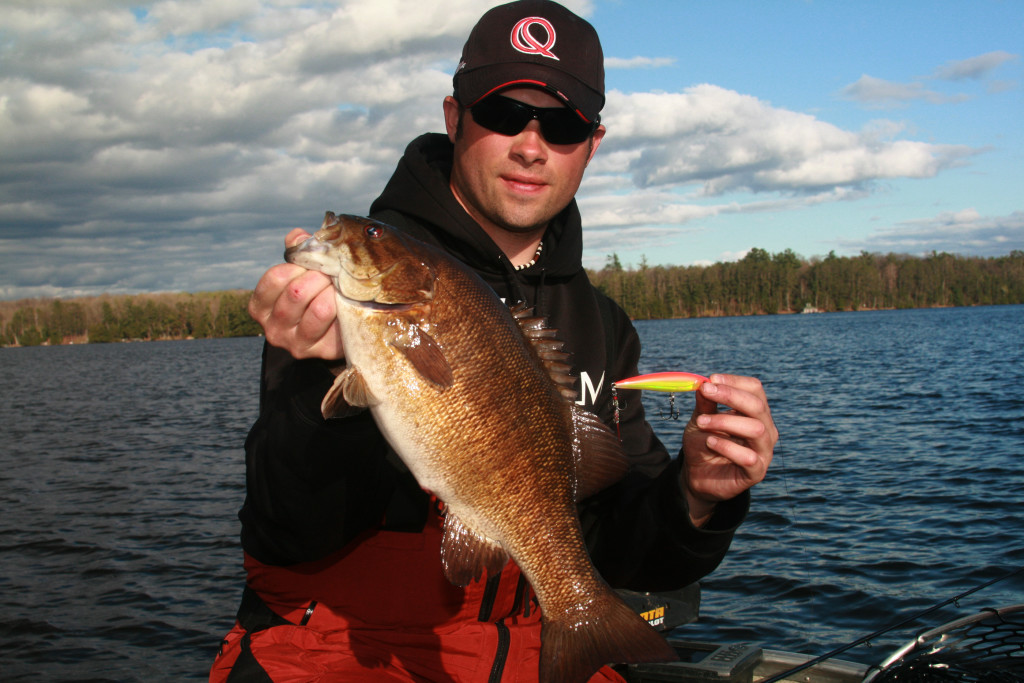
HARD JERKBAITS
For me, finding smallmouths with these techniques often means speed in presentation, following through with my milk-run of spots, and efficiency in locating concentrations of fish and ultimately camping on them. As I typically dissect multiple lakes per day, a quickly presented hard jerkbait such as the Rapala X-Rap 08 on spinning gear, and size 10 with baitcasting gear, allows me to move quickly and eliminate water while remaining efficient and locating smallmouths. By combating smallmouths with a power fishing approach like this, I’m able to target the most aggressive fish within the concentrated group first.
After showcasing these quick presentations with X-Raps, I then turn to more subtle and slower jerkbaits when I know I will be camping out at the spot and a nice concentration of smallmouths has been located. Enter the 4 in. Matzuo Phantom Minnow, Dynamic Lures J-Spec and Travado, and the all new Rapala Shadow Rap 11. Each of these is fished slower and offers a greater level of noise, suspense, and hang time in strike zones.

Dynamic Lures J-Spec
(ghost minnow)

Dynamic Lures Travado
(ghost minnow)

Matzuo Lures Phantom Minnow

Rapala Shadow Rap 11

Rapala X-Rap 8 and 10
SOFT JERKBAITS
Considering how smallmouths at this point haven’t seen a lure for months, nearly all fish initially encountered will be aggressively feeding. However, a handful within the population is stubborn. As these staging spots with concentrations of smallmouths get pounded and fish end up seeing multiple casts thrown their way, a number of fish may refuse to strike, or attempt to only push or nudge the bait avoiding hooks altogether. This is where I follow up with the soft jerkbait to clean house.

Stankx Bait Company Jerx
(Diablo)
Equally effective for smallmouths, and sometimes even better depending on fish activity levels, soft jerkbaits in the fluke style like the 4.25 inch Jerx by Stankx Bait Company can be fished with the same cadence as a hard jerkbait to draw strikes. It draws strikes from aggressive fish, but also triggers reluctant strikes from wary and conditioned fish. Soft jerkbaits like this and many other brands including the Zoom Fluke, Bass Assassin, and Strike King Caffeine Shad, will produce when the hardbait won’t. It’s important to work a soft jerkbait just as you would a hard jerkbait. Rigged weightless with a 3/0 Eagle Claw Trokar MagWorm with plastic barb keeper, which keeps it honest and gives it a slow sink, I make sure to pop the bait with a few upwards jerks and let it hang and glide slowly down a few feet in the water column. When it’s their time to be used, soft jerkbaits offer a greater hang time in strike zones and will always sink at a slow minimal rate. Additionally, they will offer livelier finesse action which I believe is what tempts conditioned fish and big and old experienced bronzebacks to strike. The soft jerkbait will often catch smallmouths from the same spots where the hardbait blew past them moments earlier.
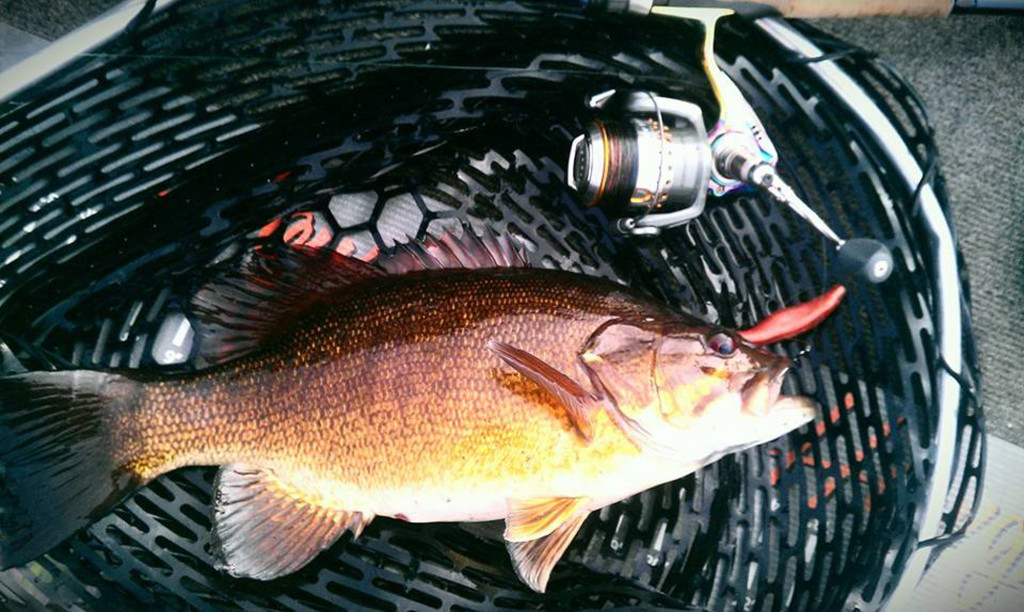
Tag Teaming Smallmouths
Finding and catching smallmouths with hard and soft jerkbaits isn’t only a visual presentation for fish, but it’s also a visual experience for anglers. Because the majority of my bites occur on slack line while the hardbait is suspending or softbait is on the glide downward, I always keep my eyes fixated on the top six inches of my rod throughout the entire retrieve. Regardless of light penetration and weather, it’s important to keep a watch on your line and the rod tip.
For fishing jerkbaits in this reciprocal manner, I always keep multiple rods and reels rigged with an array of hard and soft baits. For instance, one 6 ft. 9 in. medium heavy fast action baitcasting rod with 10 lb. copolymer line will be rigged with a size 10 Rapala X-Rap or 4 in. Dynamic Lures Travado. Another rod, a 7 ft. 2 in. medium heavy spinning rod with 8 lb. copolymer line fished with a size 30 Quantum Energy PTi-D spinning reel, will be handling a 4 in. Matzuo Phantom Minnow. A third rod, a 7 ft. medium heavy spinning rod with 8 lb. copolymer line will then handle size 08 Rapala X-Raps and 3.5 in. Dynamic Lures J-Specs. Finally, my last spinning rod, a 7 ft. medium heavy fast action spooled with 8 lb. copolymer line will handle the weightless soft jerkbait.
For most jerkbait applications I strongly recommend a spinning rod and reel over a baitcasting set-up. Line is also important. I exclusively fish with a low stretch copolymer line. Some fishermen will use braided superlines with fluorocarbon leader material but I am vehemently against it. The name of this game is suspending the bait and keeping it within 5 ft. below the surface at all times. Braided lines float and fluorocarbon leaders sink, offering zero line control. They also don’t offer any stretch which is needed for really good hook sets. I’ve seen anglers lose more fish and miss many more opportunities fishing this way than they would with copolymer lines.
If you’ve noticed by now, this piece has nothing to do with color selection or presence of baitfish. That’s right, because neither variables matter once you locate staging smallmouths! A well presented bait with perfect execution in the retrieve, and the angler’s feel for strikes and patience is what matters most.
I’ve caught hundreds of spring smallmouths with this reciprocal technique in warm and calm sunny conditions, and equally in cold windy snowy conditions. I have no such proof that weather conditions and water temperatures have a role in this style of fishing.
The success of reciprocating between hard and soft jerkbaits and interchanging them on smallmouths all has to do with smallmouths staging and being congregated near spawning grounds, their feeding moods, level of conditioning, and the angler cleaning up on his missed strikes. Learn to tag team smallmouths with a combination of hard and soft jerkbaits. By doing so, you’re going to have a hard time getting off the water this spring.


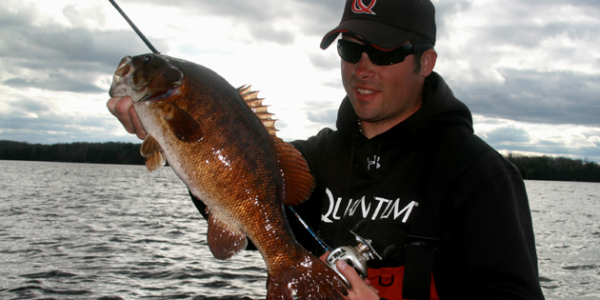
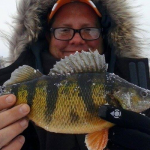
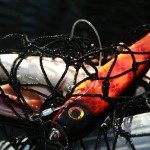

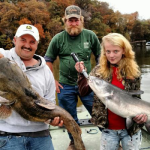
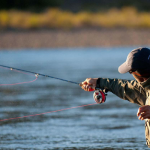

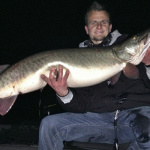
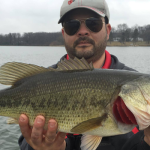



1 Comment